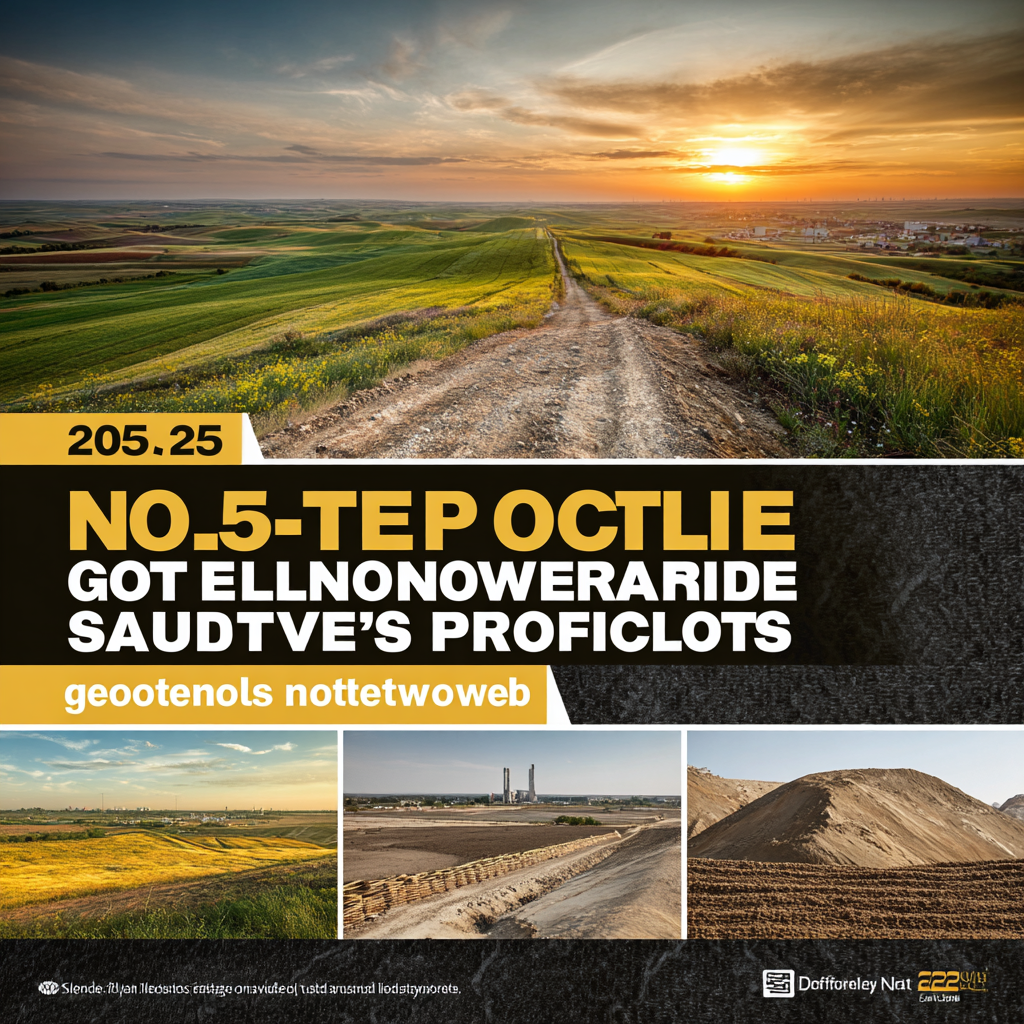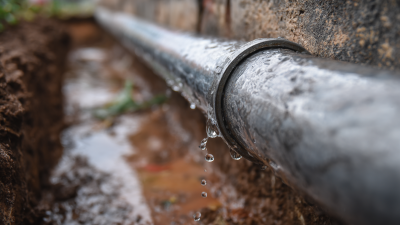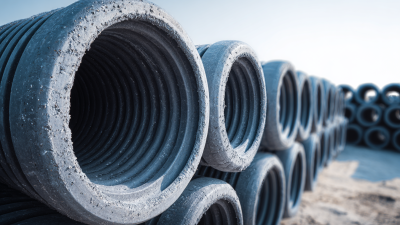As the demand for sustainable construction practices continues to rise, geotextile non woven products have become essential in enhancing soil stability and supporting various civil engineering projects. These innovative materials provide unparalleled benefits, including effective filtration, drainage, and reinforcement capabilities. In 2025, the spotlight shines on the top five geotextile non woven products that promise to revolutionize the industry by preserving soil integrity while promoting eco-friendly solutions.

Understanding the significance of geotextile non woven materials is crucial for engineers, architects, and environmentalists alike. This introduction to the top products highlights their unique features, applications, and advantages over traditional methods. From erosion control on slopes to stabilization in road construction, these advanced geotextile non woven options are designed to meet diverse project demands while ensuring optimal performance and longevity.
By focusing on these leading products, we aim to guide professionals in selecting the right geotextile non woven solutions that align with their sustainability goals and project requirements, ultimately contributing to the advancement of resilient infrastructure.
Geotextiles play a critical role in improving soil stability, particularly in infrastructure projects such as roadways and embankments. By utilizing geotextiles, engineers can enhance the pullout capacity of anchors embedded in granular soils, which is essential for maintaining the integrity of structures under varying loads. Studies indicate that the incorporation of geosynthetics can lead to a significant increase in the stability of embankments, reducing the risk of uneven settlement and structural failure. A recent report highlighted that when geotextiles are used, the resistance to permanent deformation in soil under repetitive traffic loading is notably improved.
Tip: Consider using geotextiles that also provide filtration and drainage benefits alongside stabilization for a comprehensive approach to soil performance.

Moreover, geotextiles made from eco-friendly materials, such as plant fibers, contribute positively to soil health by fostering an environment suitable for plant growth, integrating sustainability into engineering practices. The evolution of geotextile technology has yielded diverse applications, from separation in layered construction to erosion control on slopes, demonstrating their versatility and importance in modern civil engineering.
Tip: Regularly evaluate the performance of geotextiles in field conditions to adapt to the evolving challenges posed by climate and soil characteristics.
The environmental and waste management sectors play a crucial role in driving the geotextile market, particularly non-woven geotextile products. These materials are extensively utilized in landfill projects, serving as a critical component for waste containment and environmental protection. Reports indicate that the global geotextile market is projected to reach USD 13.49 billion by 2032, driven partly by the increasing demand for sustainable solutions that minimize ecological impact. Non-woven geotextiles, with their unique properties, are particularly favored due to their versatility and effectiveness in providing soil stabilization, drainage, and filtration.
Key characteristics of non-woven geotextile products include high permeability and flexibility, which make them ideal for various applications within the construction and environmental sectors. The rising awareness of sustainable materials has propelled the use of natural fibers and biodegradable alternatives in the production of these geotextiles. Advanced technologies, such as Water Absorbent Geotextiles (WAG), are emerging to further enhance the utility of these products, promoting energy sustainability and effective water management. With innovative applications and increasing regulatory pressures, non-woven geotextiles are set to become a staple in infrastructure development and environmental remediation efforts.
This chart illustrates the top 5 non-woven geotextile products based on their key characteristics such as tensile strength, permeability, and durability, showcasing their effectiveness in enhancing soil stability.
The geotextile industry is poised for remarkable advancements in 2025, particularly in non-woven products that enhance soil stability. As reported by the Geosynthetics Materials Association (GMA), the global demand for geotextiles is expected to reach $10.3 billion by 2026, driven largely by infrastructure projects and agricultural applications. Innovations in non-woven technology are enhancing their functionality, making these products crucial for erosion control, drainage management, and soil reinforcement.
One of the most significant innovations is in the development of biodegradable non-woven geotextiles, which are gaining traction as sustainable solutions for environmental protection. According to a recent report by MarketsandMarkets, the biodegradable geotextiles market is projected to grow at a CAGR of 12.5% from 2021 to 2026. This trend is complemented by advancements in polymer technology, enabling the production of lighter and stronger non-woven fabrics that maintain their integrity under challenging conditions. These innovations not only improve soil stability but also align with the increasing regulatory focus on environmental sustainability in construction and landscaping projects.
| Product Type | Primary Material | Weight (g/m²) | Applications | Innovative Features |
|---|---|---|---|---|
| Non-Woven Geotextile A | Polypropylene | 150 | Drainage, Erosion Control | High UV Resistance, Biodegradable Options |
| Non-Woven Geotextile B | Polyester | 200 | Separation, Filtration | Enhanced Puncture Resistance, Lightweight |
| Non-Woven Geotextile C | Jute | 300 | Soil Erosion Control | Eco-Friendly, Natural Biodegradable Material |
| Non-Woven Geotextile D | Polyethylene | 180 | Reinforcement, Drainage | Water Resistant, Durable Structure |
| Non-Woven Geotextile E | Natural Fiber Composite | 220 | Site Development, Road Construction | High Absorption Capacity, Reduced Construction Cost |
Non-woven geotextiles have gained significant traction in construction and landscaping due to their versatility and effectiveness in enhancing soil stability. According to the Geosynthetic Research Institute, the global geotextile market is projected to reach $13 billion by 2025, with non-woven products making up a substantial portion of this sector. These fabrics are engineered to provide excellent drainage, filtration, and reinforcement, making them ideal for a variety of applications ranging from road construction to erosion control in landscaping projects.
In construction, non-woven geotextiles serve as a vital component in subgrade stabilization, particularly in soft soil conditions. A study published by the International Journal of Geosynthetics highlighted that the use of non-woven geotextiles could reduce the total thickness of pavement structures by up to 30%, significantly cutting construction costs and time. In landscaping, these products are equally important, as they promote healthy plant growth by ensuring proper drainage while preventing weed growth. These characteristics make non-woven geotextiles invaluable for retaining walls, drainage systems, and bioengineering solutions, ultimately contributing to more sustainable land use practices.

The non-woven geotextile market is poised for significant growth in 2025, driven by the increasing demand for sustainable and high-performance soil stabilization solutions. Non-woven geotextiles offer unique advantages, such as improved drainage, soil separation, and reinforcement, making them essential in various civil engineering applications. This comparative analysis focuses on the top five geotextile products available in the market, highlighting their distinct properties and effectiveness in enhancing soil stability, particularly in challenging environments.
Advanced textiles are set to play a pivotal role in construction fabric applications, with key opportunities emerging in the use of recycled materials for environmental sustainability. As industry trends shift, geotextile manufacturers are innovating to combine performance with eco-friendly practices, thereby meeting both market demands and regulatory standards. The integration of waste-derived materials enhances the resilience of non-woven geotextiles while promoting circular economy principles, ultimately leading to a more sustainable approach to ground improvement.






